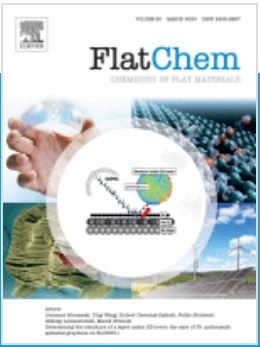Intercalation of solid and molecular species underneath 2D materials is one of the hottest topics in physics and chemistry nowadays – being important from the point of view of well-defined 2D materials-metals contacts formation, as well as performing catalytic reactions under cover. The confined space available for the intercalated layer’s formation often favours unique structural arrangements which are, however, difficult to study directly using conventional surface science techniques. We used directional elastic peak electron spectroscopy (DEPES) in combination with low energy electron diffraction (LEED), Auger electron spectroscopy (AES) and X-ray photoelectron spectroscopy (XPS) to determine the structure of a Pb layer underneath epitaxial graphene (Gr) on Ru(0001). The results reveal that Pb forms a (√7×√7)R19.1° structure underneath Gr, which is similar to that formed by Pb on clean Ru(0001). As DEPES measurements utilize conventional LEED/AES optics commonly available in surface science laboratories, our approach can be adapted by other groups for the determination of the structure of various layers under 2D-covers.
